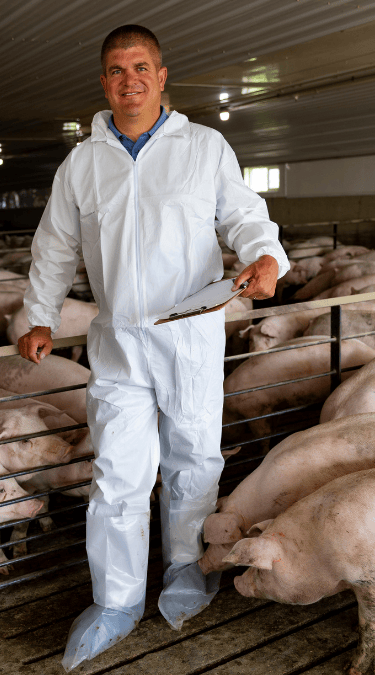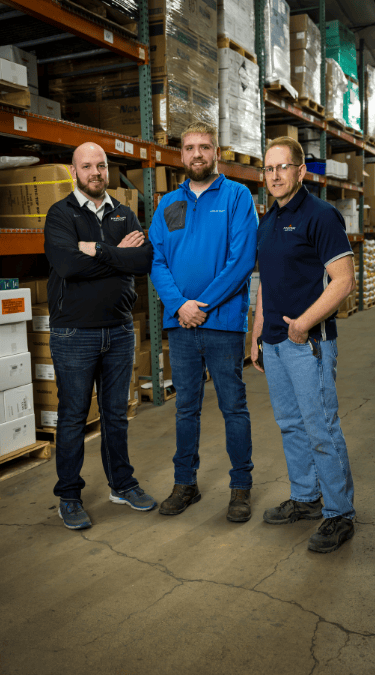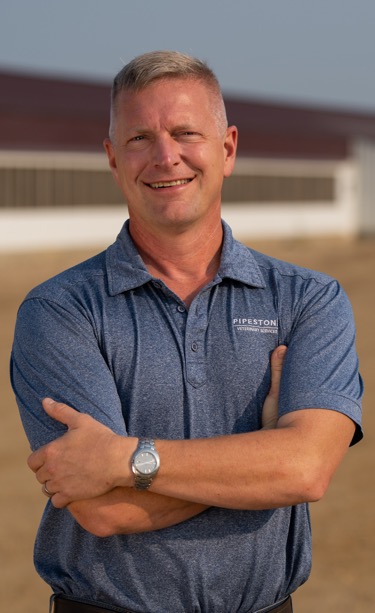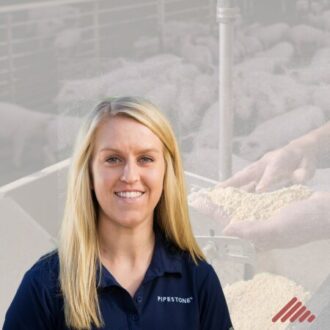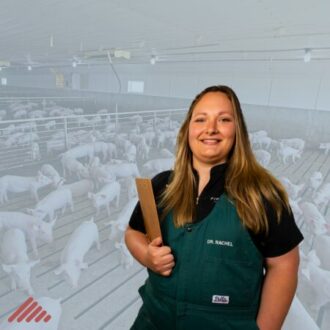For most pork producers, 2020 has not been a year of profitability. Without government program payments and a short-term spike in cut-out prices in May, the red ink has been steadily flowing. During these unfavorable economic times, your business uses the working capital you’ve created in the good times.
Working capital measures whether you have more current assets than current liabilities. Current assets are assets that will be converted to cash in the next 12-months. This includes accounts receivable, prepaid expenses and inventory. Current liabilities are liabilities due in the next 12-months including accounts payable, accrued expenses and the current portion of long-term debt.
Working capital is measured by subtracting current liabilities from current assets. It is easy to overstate your working capital if you don’t take the time to include accrued interest and current portion of long-term debt; however, monthly financial statements allow you to see how quickly you are using or building working capital.
I am often asked, “How much working capital should I have?” Many lenders look for agriculture producers to have working capital equal to 30% of annual gross revenues. Others look for a similar percentage of annual operating expenses. While 30% working capital to gross revenue is an industry standard, it will take more working capital to fund an expansion or weather a black swan event such as a global pandemic or African Swine Fever in the United States.
Improve operational efficiency
Aggressively managing operational efficiency is the most effective way to improve working capital. High prices tend to make us less attentive to the details that maximize profitability. In the farming community, there is an old saying, “It’s time to make hay when the sun shines.” During periods of high prices, it’s time to make working capital!
Optimizing income from operations by aggressively managing the percent of pigs sold as market tops, sales weights that optimize margin over feed cost, and risk management strategies that include lean hog, corn and soybean meal prices. Additional income from operations gives you the ability to make progress on paying down your accounts payable and RLOC balances.
Because things can change quickly in a livestock operation, it’s important to have your finger on the pulse of your working capital position each month.
Reduce interest rates
With interest rates at all-time lows, refinancing debt to a lower interest rate while not extending the term of the loan will reduce your overall interest cost. Obviously, your interest expense savings will depend on the spread between your new rate and your current interest rate. If you can recover your costs to refinance within 12-24 months, it’s generally a good time to refinance and lower your interest rate.
Extend loan amortization periods
Refinancing debt may offer an opportunity to extend the term of a long-term loan to match the useful life of the underlying assets that collateralize the loan. There are limits to how many years lenders will amortize a loan. Lenders will match your amortization period with the useful life of the asset(s) pledged as collateral. For example, if the useful life of your finishing barn is 12 years, you may be able to extend the repayment period from the 7 years remaining on the existing loan to 12 years on the new loan.
In exchange for extending the term of your loan, you will likely increase your monthly free cash flow. Without prepayment penalties or restrictions, extending the loan’s term increases your cash flow flexibility. As the stars align and hog sales prices are high, feed purchase prices are low and operational efficiency is high, the business will generate cash. After your current liabilities are paid down, you can use the excess cash to prepay long term liabilities.
Create operating debt capacity
If you have long-term assets that are not pledged as collateral for other debt, you may consider moving your some or all of your operating loan (line of credit) to long term debt making room for short term borrowing when hog prices are lower.
Alternately, you could also accomplish a similar result by securing a revolving line of credit secured by unpledged real estate. The real estate revolver loan uses real estate as collateral for short term borrowing. Because this financing often sits idle until it’s needed, the lender will often charge an unused commitment fee.
Catch up on maintenance
In sports, sometimes the best defense is a good offense! Deferring maintenance during periods of low prices is a common strategy to conserve cash for operations. Inevitably, deferred maintenance will catch up with you at the most inopportune time. One way to reduce the use of cash for repairs and maintenance during periods of low prices, stay current on your maintenance. Diligently schedule your building and equipment maintenance when cash is available to reduce the likelihood you will be paying for required maintenance during periods of low prices. It’s time to play some offense!
Diversify customer risk
The old saying, “don’t put all of your eggs in one basket” applies to doing business with multiple packers to reduce your contract and customer risk. Customer risk became evident during the Covid 19 pandemic. As some packers were forced to slow down or shut down their operations for weeks during the pandemic, it was beneficial to have multiple packer relationships to minimize the impact of an individual plant shut down. If all of your eggs were in one basket, the pandemic shut downs may have had a significant negative financial impact. Keep in mind that the challenge with diversifying customer risk is that simultaneously you may be giving up selling power by spreading your sales volume across packers. The same holds true for the diversification of packer contracts. It’s a delicate balance.
Invest in integration and diversification
Strategic investments in your business can drive out middleman margin or create counter cyclic revenue streams that generate cash flow during periods of low hog prices. Most of us like to invest in things we know and understand. However, making investments to vertically integrate up or down the value chain will likely require you to hire expertise to be successful. For example, if you invest in a feed mill to drive out middleman profit, you will need to understand the complexities of operating a feed mill that is cost competitive. Additionally, investing in counter cyclic revenue streams that are high when hog prices are low will even out your cash flows and reduce the impact of low hog prices on your business. A strategy for reducing the learning curve of a new business is to partner with those who have experience in the new integration or diversification business. As with pork production, there are barriers to entry in the businesses up and down the value chain. Finding a partner is easier said than done!
We understand that low hog prices are cyclic occurring every 3-4 years. It is important to use the tools available during periods of profitability to prepare for periods of low prices.
Regular, timely and accurate financial statements are an essential tool for measuring your working capital and overall financial position. Annual financial statements may not provide you with the timely information you need to make proactive decisions. Additionally, an outside perspective from your lender, CPA, veterinarian or other business advisors is an important tool for remaining objective and understanding business strategies that have worked for other producers. Use these tools to get your business ready in the good times for the bad times.
